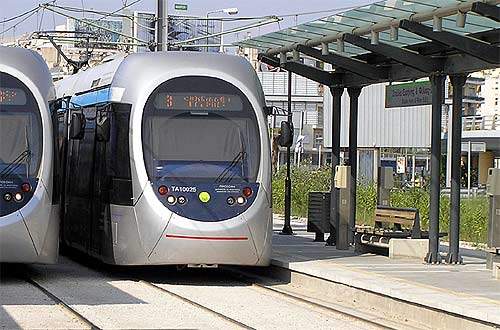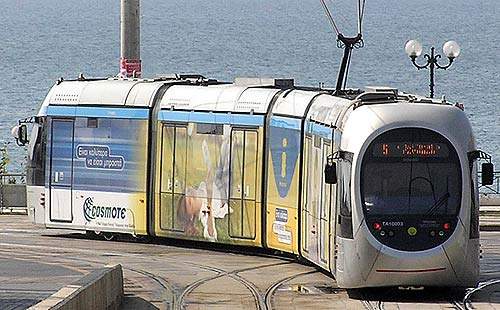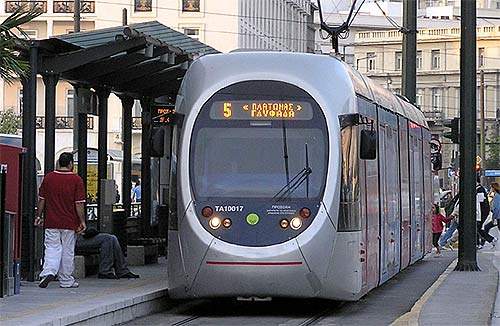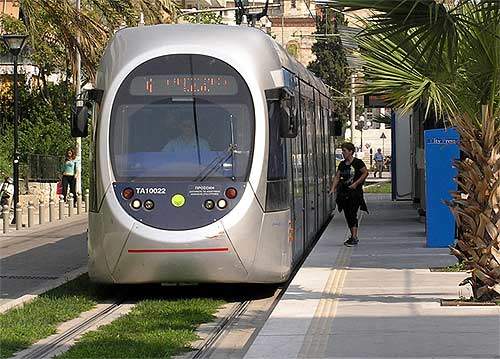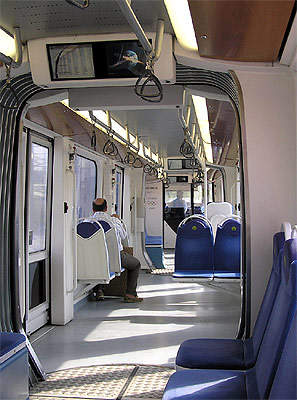Athens’ original tram system was closed by 1960 because it was believed that the cars, taxis and buses could cater for the expanding city’s transportation needs. By the end of the 20th century, the Greek capital had become synonymous with traffic congestion and air pollution.
In September 1997, Athens was awarded the 2004 Olympic Games, providing a pressing stimulus to address public transport in the metropolitan area, which at the time had a population around 3.5 million.
The project
Athens Tram was one of three urban transport projects specially constructed in relation to the Olympics, the others being a suburban railway and an extension of the already enlarged metro to the new Eleftherios Venizelos International Airport. The project was 50% funded by the European Fund of Regional Development of the 3rd Community Support Framework, with the remainder coming from national funds.
Overall authority for public transport is Athens Urban Transport Organisation. Operating company Tram was founded in March 2001 as a subsidiary of government-owned Attiko Metro.
Initially targeted for 100,000 passenger journeys per day, there were shortfalls reported of around half of that number in the first year, partly attributed to the retention of bus services that duplicated tram routes. It is anticipated that numbers will rise substantially with extension to Piraeus, an urban centre in its own right and generator of passenger traffic as the focal point of Greece’s extensive ferry operations. The tram currently carries 67,000 passengers a day.
Rolling stock
The modular Pininfarina-styled Sirio fleet of 35 trams was supplied by Ansaldobreda of Italy. A continuous low floor, 350mm from the rail top to floor level, provides easy access from low platforms. The double-ended air-conditioned five-unit sets are made up of two two-car halves around a central short section accommodating the pantograph.
As with platform signage, on-board announcements are in Greek and English. Because the system opened only a few weeks prior to the Olympics, intensive driver training was partly carried out in Germany.
Maintenance is at the depot built on part of the former Athens Ellinikon Airport site on the coastal stretch, with some Olympic Airways structures adapted for tram use. As with works for the Athens underground rail lines, excavations revealed artefacts that attracted archaeological attention.
Infrastructure
Construction work for the €340m project began in March 2002, and services officially started in July 2004. Linking several of the Olympic venues (not including the main site), the 27km (16 mile) route follows the Faliro-Voula coastal strip with a link from near the Edem stop to Syntagma Square in the city centre, adjacent to the Greek Parliament and main shopping area.It has 48 stops, including the three terminal stations at Syntagma, SEF and Asklipiio Voulas.
A €150m contract for infrastructure, related electro-mechanical work and maintenance for the first three years was awarded to Italian-Greek Consortium Terna/Impregilo.
Atkins Rail provided detailed design for the infrastructure, railway systems and related services such as workshop design and procurement of maintenance equipment. Hamburg-Consult was subcontracted for aspects of design and engineering during planning and commissioning.
With real time indicators and low platforms at stations, all above-ground, the standard gauge tracks feature grass surrounds and tree plantings in many locations.
Ticketing for different transport modes in the city is available, with trams intersecting with Athens’ extensive bus network and at three points with Metro lines. The network operates 05.00–01.00, with 24-hour operation Friday–Sunday.
The future
Phase Two, designated for 2008–2020, includes expansion from the current city centre presence at Syntagma Square and for the eastern suburbs. The policy is that new routes will feature more interchanges with Athens’ other urban public transport modes.

